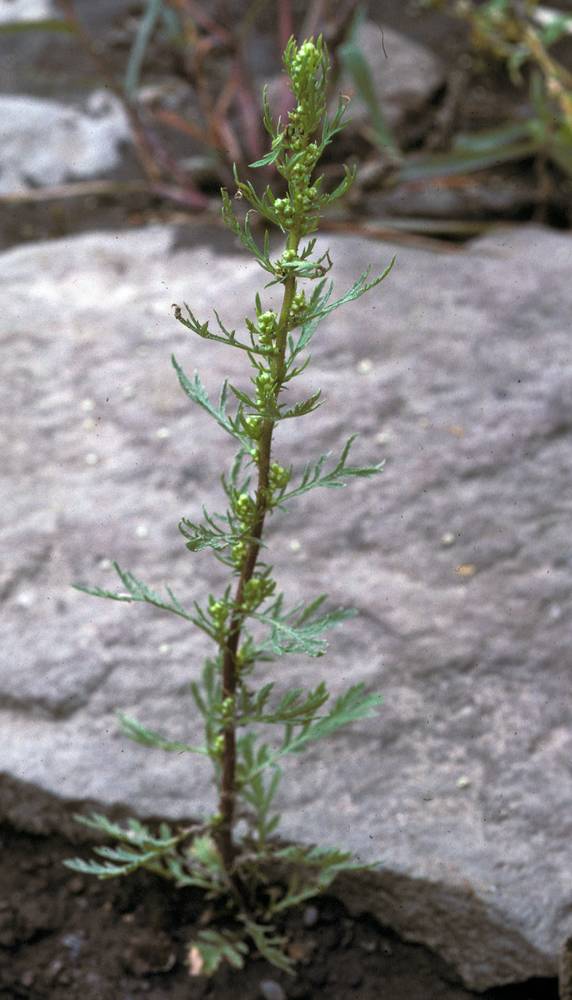
Herbs annual or biennial, 2–10+ dm; taprooted.
Stems glabrous or minutely puberulent.
Leaves numerous, cauline, 2–10 cm, reduced distally, 1-pinnate, lobes oblong or oblanceolate to linear, evenly or unevenly serrate, surfaces glabrous; petioles slender, sometimes with a few small leaflets.
Inflorescences numerous tight clusters of heads.
Heads disciform, erect; sessile or short-peduncled.
Involucres spherical, 2–3 mm.
Phyllaries in 2–3 equal to subequal series, ovate-elliptic, margins membranous, surfaces glabrous.
Receptacles glabrous.
Florets 15–50, outer pistillate, inner bisexual.
Fruits 1–1.5 mm, glabrous.
2n=18.
Thickets, fields, margins of rivers and lakes, desert flats, disturbed areas. Flowering Aug–Oct. 600–1000 m. BR, BW, Lava, WV. CA, ID, NV, WA; throughout most of Canada and US; Europe, New Zealand. Native.
as described under Artemisia biennis
Annuals or biennials, (10-)30-80(-150) cm, not aromatic. Stems 1, erect, often reddish, simple (finely striate), glabrous. Leaves cauline, green or yellow-green (sessile); blades broadly lanceolate to ovate, 4-10(-13) × 1.5-4 cm, 1-2-pinnately lobed (ultimate lobes coarsely toothed), faces glabrous. Heads (erect, subsessile) in (leafy) paniculiform to spiciform arrays 12-35(-40) × 2-4 cm (lateral branches relatively short). Involucres globose, 2-4 × (1.5-)2-4 mm. Phyllaries (green) broadly elliptic to obovate, glabrous. Florets: pistillate 6-25; bisexual 15-40; corollas pale yellow, ca. 2 mm, glabrous. Cypselae ellipsoid (4-5-nerved), 0.2-0.9 mm, glabrous. 2n = 18.Flowering mid summer-late fall. Disturbed habitats, margins of vernal pools, desert flats, usually clay or silty soils; 600-2000 m; Alta., B.C., Man., N.B., N.W.T., N.S., Ont., P.E.I., Que., Sask., Yukon; Alaska, Ariz., Calif., Colo., Conn., Del., Idaho, Ill., Ind., Iowa, Kans., Ky., Maine, Md., Mass., Mich., Minn., Mo., Mont., Nebr., Nev., N.H., N.J., N.Mex., N.Y., N.Dak., Ohio, Oreg., Pa., R.I., S.Dak., Utah, Vt., Wash., W.Va., Wis., Wyo.; introduced in Europe, Pacific Islands (New Zealand).Artemisia biennis is naturalized and weedy in the eastern portion of its range. It is morphologically similar to A. annua, differing primarily in the coarser leaf lobes and larger heads that are sessile in axils of leaflike bracts. Artemisia biennis is considered native to the northwest United States; it may be introduced in other parts of its range. The type specimen is a horticultural specimen from New Zealand.